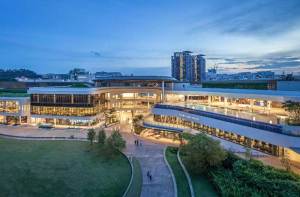Rattana Lao (nsnbc) : The recent 2018 Asia University Rankings published by the Times Higher Education (THE) magazine is calling attention for the state of Thai higher education.
Unlike its Asian neighbors, Thai universities are falling behind.
The National University of Singapore maintained its number one status for the third consecutive year due to its continuous improvement in teaching and research environments, greater citation impact and higher amounts of industrial income, said Ellie Bothwell of the Times Higher Education.
This year, the numbers of universities being ranked increased from 300 to 350 universities. Japanese universities are amongst the most qualified universities in Asia with 89 universities made it to the list. 63 universities from China are included in the top 350.
The picture looks worrisome for Thailand. Only ten universities made it. However, none of them was ranked in the top 50. The best performing university from Thailand was Mahidol– with ranking of 97th place, same as that in 2017, while the oldest higher education establishment, Chulalongkorn University, is only 167th place amongst 350 institutions.
Should we be concerned about this?
Yes, and no.
Given that ranking has been taken as a face value that it equates the overall quality of higher education, the poor performance sends a negative signal. It is a setback for Thailand’s aspiration to become the regional hub of education in Southeast Asia. How can we be a regional center when the best of our universities are far behind that of Singapore and Malaysia?
This is also bad for internationalization process. The low performance is discouraging for potential research partners and foreign students to come to Thailand. It lowers Thailand’s attractiveness and competitiveness.
While the results are not promising, what is worse is how they are used and interpreted by policymakers and the media to create, what professor Gita Steiner-Khamsi of Teachers College, Columbia University called “a scandalization effect”. That means, results from international league tables haven been used as external forces to generate reforms pressure at the local level.
Thailand is no exception. Since Asia Week published the first Asian universities ranking in 1997, Thai politicians, policymakers and the media have used the international results to create reform pressure. A decade long of higher education policy analysis confirmed that boosting the ranking seems to be the only policy goal for most Thai policymakers.
But ranking is not everything.
Mrs. Ruangrat Wongpramote, Assistant Secretary General of the Education Council poignantly said: “ranking helps us to mirror the reality. It is a good tool for us to know where we are standing in comparison with others. But it does not tell us everything. There are more pressing issues in Thai higher education.”
These issues include quality of the students, quality curriculum and quality teaching.
Firstly, Thailand has to shift its focus from quantity students to quality students.
For the past 100 years, the system has done well in terms of access. There were only five universities in the first 50 years of Thai higher education and all of them were established in Bangkok Metropolitan area. Now the official record reported that there are 151 universities across the country – with 81 public universities and 75 universities in most of provinces. The expansion has made it available for more than 2 million enrollments.
While the massification provides more equitable educational opportunities for students, the mismatch between skills and jobs requirement, low quality of English proficiency and lack of critical thinking are amongst key issues that need to be seriously addressed.
Secondly, Thai curriculum needs to be upgraded. The Office of Higher Education Commission has implemented Thailand Qualification Framework or TQF with the hope of improving and standardizing Thai curriculum. However, what the government has had in mind is counter-productive to improvement of the curriculum.
TQF is academics worst nightmare. It requires academics to fill in lengthy lesson plans, detailed description of their syllabus and anticipated unimaginable outcomes. The rubrics are demanding and micro-managing. Instead of improving curriculum, academics report they cut and pasted, worst, lied just to complete the form.
This policy takes away precious class preparation time for nonsensical administrative things.
A more efficient and collegial way of improving the curriculum is needed.
Thirdly, quality teaching must be improved. Large classrooms are not in and of themselves problematic. But ones that are passive, top-down and lecture-based are outdated. Lecturers must work harder than regurgitating the texts to students. Classrooms need to be conducive space for learning where conceptual debates, analytical discussion and constructive dialogues are promoted. In the era where students can google to get basic facts, university students must be pushed harder to think critically. Students must learn to ask difficult questions and come up with creative answers.
A bad ranking is a good wake up call. But what we will do about it is what matters most.
Rattana Lao, nsnbc – 24.02.2018 – Also published in Modern Diplomacy. – Rattana Lao holds a doctorate in Comparative and International Education from Teachers College, Columbia University and writes on education and development. She is based in Bangkok, Thailand.
Source Article from https://nsnbc.me/2018/02/24/87899/
 RSS Feed
RSS Feed















 February 24th, 2018
February 24th, 2018  Awake Goy
Awake Goy 











 Posted in
Posted in  Tags:
Tags: 













